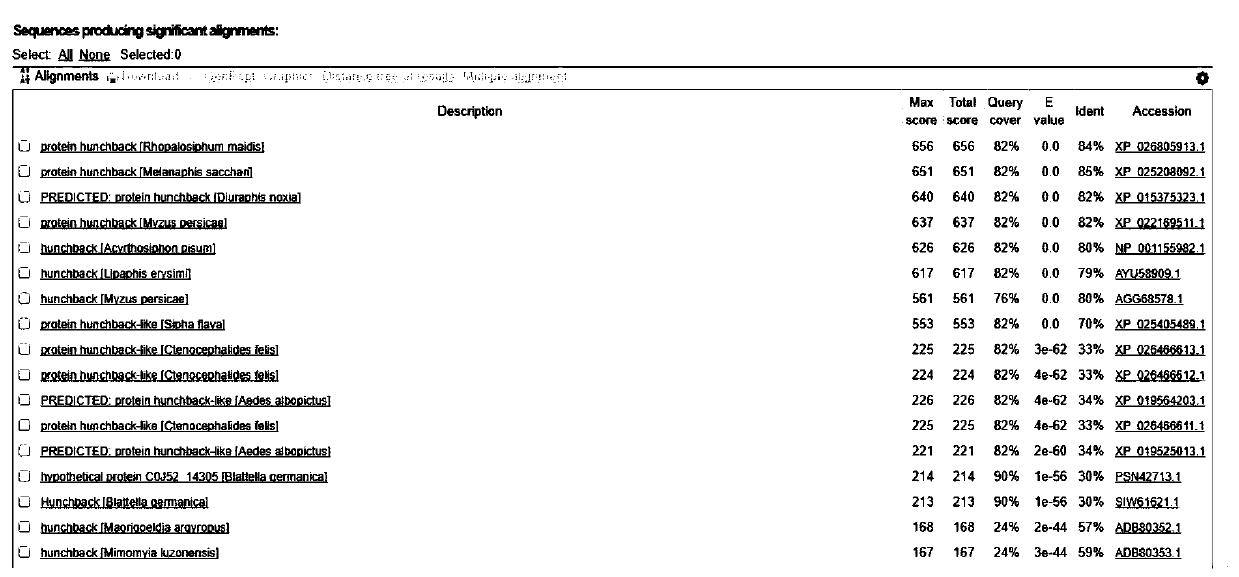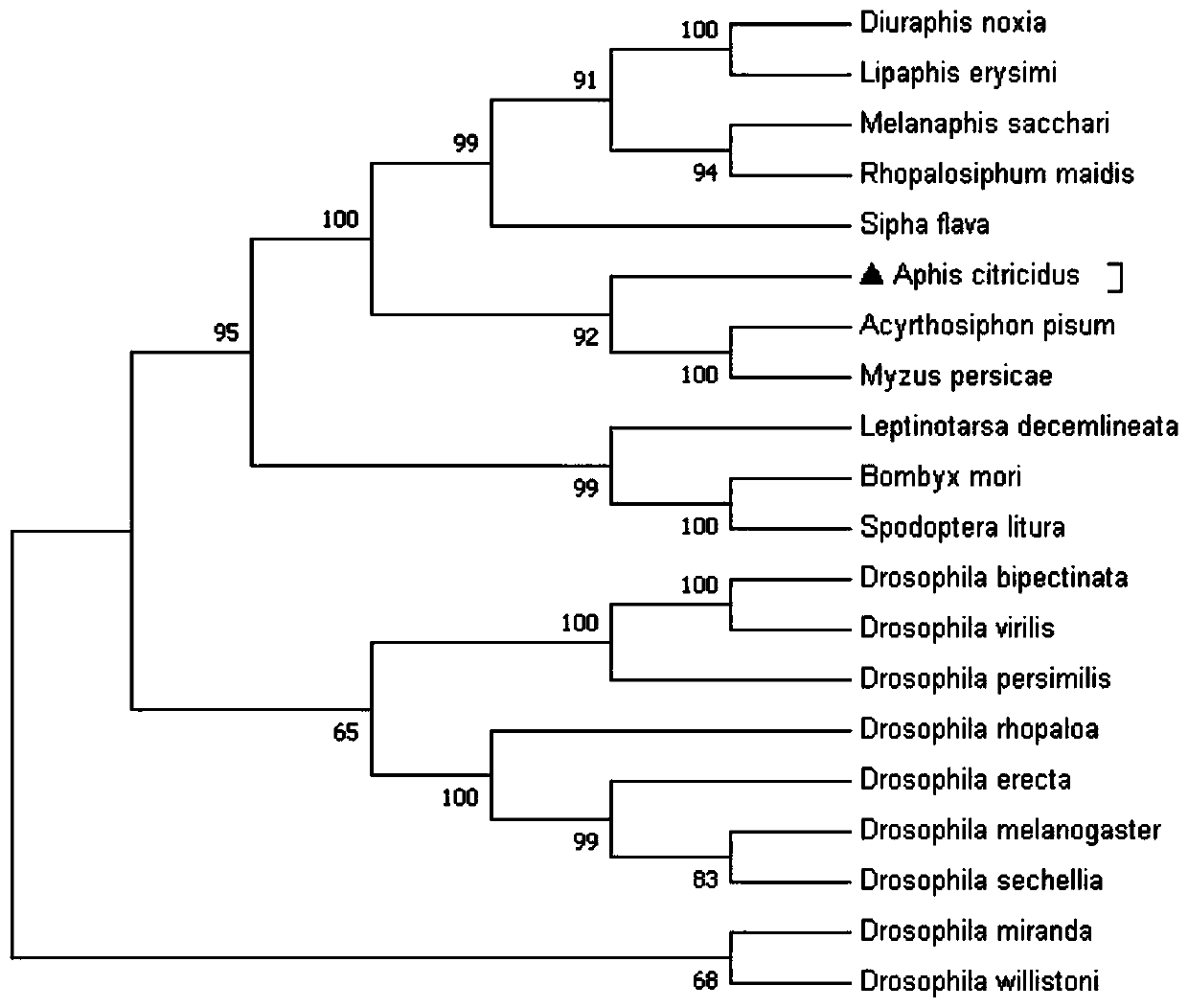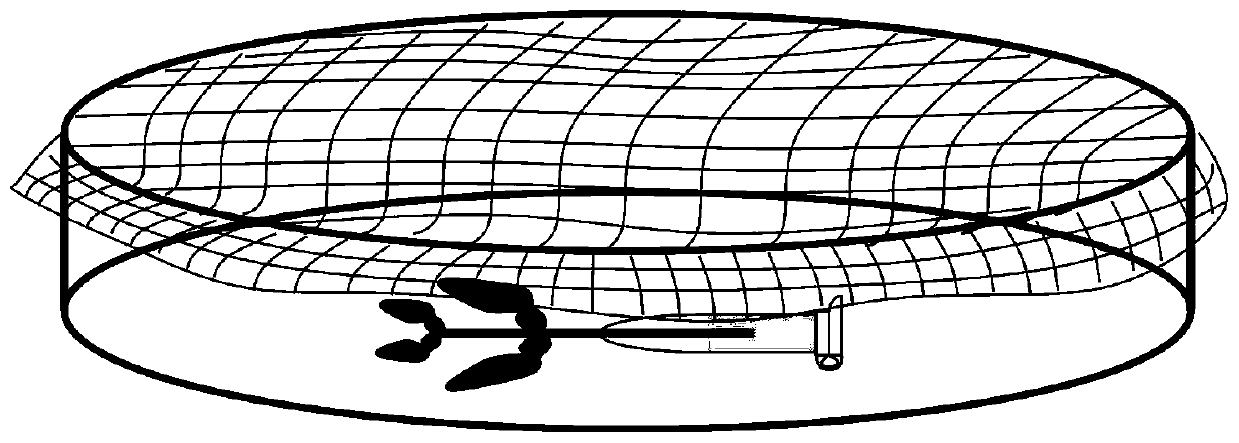Toxoptera citricidus kirkaldy Hunchback gene, dsRNA and synthesis method and novel aphid RNAi method
A synthetic method, the technology of orange aphid, applied in the field of dsRNA and synthesis, brown orange aphid Hunchback gene, new aphid RNA, can solve problems such as improper application of chemical pesticides, impact on fruit safety, drug resistance, etc., and achieve simple and feasible delivery. The effect of high gene silencing efficiency and great application potential
- Summary
- Abstract
- Description
- Claims
- Application Information
AI Technical Summary
Problems solved by technology
Method used
Image
Examples
Embodiment 1
[0032] Embodiment 1, brown orange aphid ABCG4 gene sequence identification
[0033] 1) Find a possible Hunchback Unigene sequence from the transcriptome data of the brown orange aphid (provided by the Key Laboratory of Entomology and Pest Control of Southwest University), and find a unigene sequence in the transcriptome through tBlastn.
[0034] 2) Use the RNA extraction kit RNeasyPlus Micro Kit to extract the total RNA of the brown orange aphid according to the instructions, and then use the reverse transcription kit Perfect real time RT reagent to reverse transcribe 1 μg of the total RNA into cDNA according to the instructions.
[0035] 3) Using the cDNA obtained above as a template, design amplification primers, and use the upstream and downstream primers Hunchback-A and Hunchback-S for PCR amplification; PCR conditions are: 95°C pre-denaturation for 3 minutes; 95°C denaturation for 30 seconds, 60°C annealing for 10 seconds , Extend at 72°C for 2min, a total of 35 cycles; e...
Embodiment 2
[0041] Embodiment two, the synthesis of the dsRNA of brown orange aphid Hunchback gene
[0042] 1) According to the transcriptome data of the brown orange aphid (provided by the Key Laboratory of Entomology and Pest Control of Southwest University), design the upstream and downstream primers T7-Hunchback-S (as shown in SEQ ID NO:4), T7- Hunchback-A (as shown in SEQ ID NO:5), synthetic primers, primer sequences are respectively:
[0043] T7-Hunchback-S:
[0044] TAATACGACTCACTATAGGGTGCGACTACAAGTGCGTGA;
[0045] T7-Hunchback-A:
[0046] TAATACGACTCACTATAGGGATAGAGTACGGCGACGGATG.
[0047] 2) Use the Trizol reagent to extract the total RNA of the brown orange aphid according to the instructions, and then use the reverse transcription kit Perfect real time RT reagent to reverse transcribe 1 μg of total RNA into cDNA according to the instructions. The reverse transcription system is 20 μl, including : Total RNA 1 μl (about 1 μg), 5×PrimeScript Buffer 4 μl, PrimeScriptRT EnzymeMix...
Embodiment 3
[0055] Embodiment three, the dsRNA of brown orange aphid Hunchback gene is introduced into brown orange aphid
[0056] To deliver dsRNA to the brown orange aphid using a micropipette, follow these steps:
[0057] 1) Cut off the bottom of the 1.5mL centrifuge tube, pour about 1mL of tap water, insert the citrus shoots from the bottom of the centrifuge tube, and then seal the gap between the orifice at the bottom of the centrifuge tube and the stems of the shoots with a paraffin mold. Put it into a petri dish, cover it with gauze, and then fix it around the mouth of the dish with a rubber band to ensure the normal breathing of the brown orange aphid while preventing it from escaping. This device will be used as the brown orange aphid that will be used later. Aphid feeding devices (such as image 3 shown).
[0058] 2) Fix the brown orange aphid with its back facing upwards on the sticky paper.
[0059] 3) Rinse the Hamilton micropipette successively with absolute ethanol and u...
PUM
 Login to View More
Login to View More Abstract
Description
Claims
Application Information
 Login to View More
Login to View More - R&D
- Intellectual Property
- Life Sciences
- Materials
- Tech Scout
- Unparalleled Data Quality
- Higher Quality Content
- 60% Fewer Hallucinations
Browse by: Latest US Patents, China's latest patents, Technical Efficacy Thesaurus, Application Domain, Technology Topic, Popular Technical Reports.
© 2025 PatSnap. All rights reserved.Legal|Privacy policy|Modern Slavery Act Transparency Statement|Sitemap|About US| Contact US: help@patsnap.com



